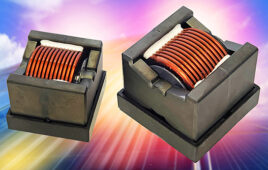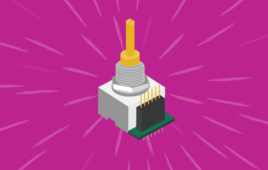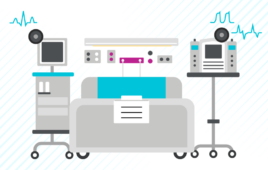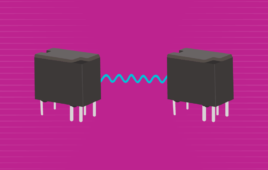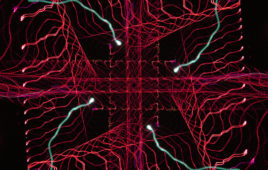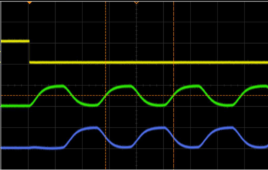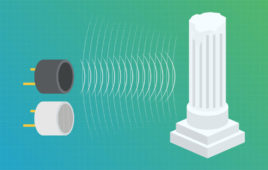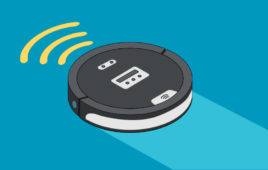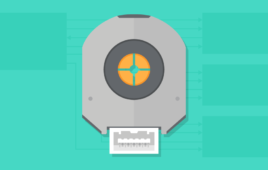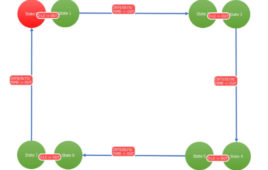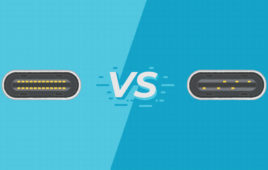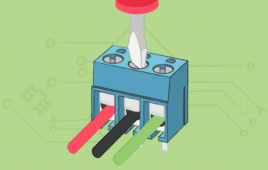The evolution of USB standards has been instrumental in shaping the landscape of modern computing and connectivity. From the basic functionality of USB 1.0 to the enhanced capabilities of USB4, each iteration has brought significant improvements in data transfer speeds, power delivery, and device compatibility. As a result of USB’s rapid advancement, the constantly changing…
Solving thermal challenges in EV charging
In the ever-evolving landscape of electric vehicle (EV) technology, the pursuit of faster charging speeds and increased efficiency stands as a paramount goal. As significant improvements in EV technology continue in tandem with growing government support, the demand for electric vehicles has never been higher. However, amidst this drive for progress, one critical aspect that…
Sumida releases AEC-Q200-qualified 500 V power inductors
Sumida is using the 2024 APEC Power Electronics Conference for the North American introduction of two new series of AEC-Q200 qualified power inductors, the DPQ3535/T150 and DPQ5050/T150. These inductors are magnetically shielded and have a pin-type base for surface mounting on printed circuit boards. High surface area flat-wire windings minimize internal resistance at high frequencies…
Infineon launches Matter-certified OPTIGA Trust M MTR for enhanced smart device security
Infineon Technologies AG has introduced the OPTIGA™ Trust M MTR, a new Secure Element certified by the Matter standard to bolster security and simplify interoperability in smart home and building devices. This latest addition to the OPTIGA Trust M series comes with a Matter provisioning service, addressing the challenges of integrating robust security features into…
Intro to panel mount encoders
In the domain of electrical engineering, panel mount encoders play a pivotal role in precision measurement and control systems, influencing the performance and accuracy of a diverse range of applications. Panel mount encoders fall under the category of rotary encoders. These devices are physically affixed to panels and find primary utility in human interface applications.…
Intro to panel mount encoders
In the domain of electrical engineering, panel mount encoders play a pivotal role in precision measurement and control systems, influencing the performance and accuracy of a diverse range of applications. Panel mount encoders fall under the category of rotary encoders. These devices are physically affixed to panels and find primary utility in human interface applications. […]
A comprehensive exploration of IEC 60601-1-8 for medical alarm systems
In the intricate web of healthcare technology, the seamless integration of medical alarm systems plays a pivotal role in ensuring patient safety and the efficient functioning of medical equipment. Due to the mission-critical nature of these medical alarms, it should come as no surprise that additional regulations govern them, specifically IEC 60601-1-8—a standard that delineates…
An overview of signal relays
Signal relays are devices that are commonly used to control the flow of electrical current in a wide range of applications, from simple household appliances to complex industrial systems. Their simple design has made them a go-to component for safely and reliably controlling circuits from a distance. Signal relays are typically tasked with switching current…
Thyristors provide high surge-current overvoltage protection in compact package
The new Pxxx0S3N SIDACtor Protection Thyristor Series safeguards exposed interfaces in industrial and ICT applications, including RS-485 data interfaces and ac/dc power supplies. Providing equipment in harsh environments with increased protection from severe overvoltage transients assists designers in complying with regulatory requirements. Available in a compact, DO-214AB (SMC) package, the Pxxx0S3N SIDACtor series is designed…
Current and future PCB fabrication trends you need to know
by Ken Ghadia, Sales Engineer, TechnoTronix PCB fabrication is transforming circuit board design into a physical PCB based on design specifications. It is usually an outsourced activity done by a Contract Manufacturer (CM) who strictly follows the specifications provided by the designer. Certain critical factors like choice of the PCB substrate, layout strategy, surface coating requirements…
10 straightforward ways to reduce PCB assembly costs without compromising PCB quality
by Ken Ghadia, Sales Engineer, TechnoTronix It is difficult to build a quality product at the lowest cost. The quality of a PCB depends on the competence of its design for assembly, testing, repair, reliability, manufacturing, and yield. Several factors impact the cost of a PCB assembly. However, the designers can consider certain factors that may…
From designing to operating an RF PCB: The complete guide
by Ken Ghadia, Sales Engineer, TechnoTronix Radio Frequency (RF) PCBs are very high-speed circuits operating at frequencies in the range of 100MHz and above, typically from 500MHz to 2 GHz. RF PCBs are the backbone of wireless networks, high-tech gadgets like smartphones, smart TVs, etc. Also, RF PCBs are used in automotive, medical equipment, military,…
How to generate PWM-based dual sine waves
By Krupa Bhavsar, Applications Engineer, Dialog Semiconductor Sine waves are continuous waves, which describe a smooth periodic oscillation. These waves are generally used in signal processing and engineering fields In this article, dual sine waves with opposite polarity as shown in Figure 1 are generated without coarse PWM “steps”. For generating sine waves, one PWM…
An introduction to ultrasonic sensors
Ultrasonic sensors have been a popular method for distance measurement and object detection for many years. Their basic operating principle works by measuring the amount of time it takes for their emitted ultrasonic pulse of sound to bounce off an object and return, hence the name ultrasonic sensor. With the market for autonomous robots, vehicles,…
Interfacing Nextion HMI with MCU
In the previous tutorial, we learned how to use the Nextion HMI editor. In this tutorial, we will is studying the advanced features of the HMI and learn how to interface an external microcontroller with nextion HMI. Our focus will be on communication protocol, command set, and data synchronization. Nextion HMI talks with external modules…
Analyzing different proximity sensor technologies
Utilized as a no-touch method to provide either precise distance measurement to an object or simple “there/not there” logic, proximity sensors span a wide range of technologies, each offering their own set of operating principles, advantages, and drawbacks. Some of the most commonly found technologies in portable or small embedded systems include ultrasonic, photoelectric, laser…
An overview of absolute encoder communication protocols
Depending on the application, a controller or variable-speed electric-motor drive may need to measure any combination of rotor speed, position, and direction. Absolute encoders are a popular motion control choice with their ability to determine rotor position immediately at power on, while also being able to keep track of position during sudden power losses. With…
Project: Implementing a 4xN LED driver
by Dialog Semiconductor LED displays are widely used in systems ranging from digital clocks, counters, timers, electronic meters, basic calculators, and other electronic devices capable of displaying numerical information. Figure 1 depicts an example of a 7-segment LED display which can show decimal numbers and characters. As each segment on the LED display can be…
A look at USB Type-C in power-only applications
Having been around for more than two decades, USB connectors are one of the most popular and well-recognized interconnect components in electronic designs. From Type A to Type-C, USB has gone through an array of changes both in terms of the physical connector as well as their associated standards. USB Type-C is the most advanced…
Terminal block selection guide
Terminal blocks, often called connection terminals or screw terminals, provide secure wire-to-board or wire-to-wire connections in a range of end applications. While a relatively straightforward component by their very nature, terminal blocks still have a number of design considerations to take into account. Key mechanical specifications like the wire-entry orientation, wire-securing method, and module type…



